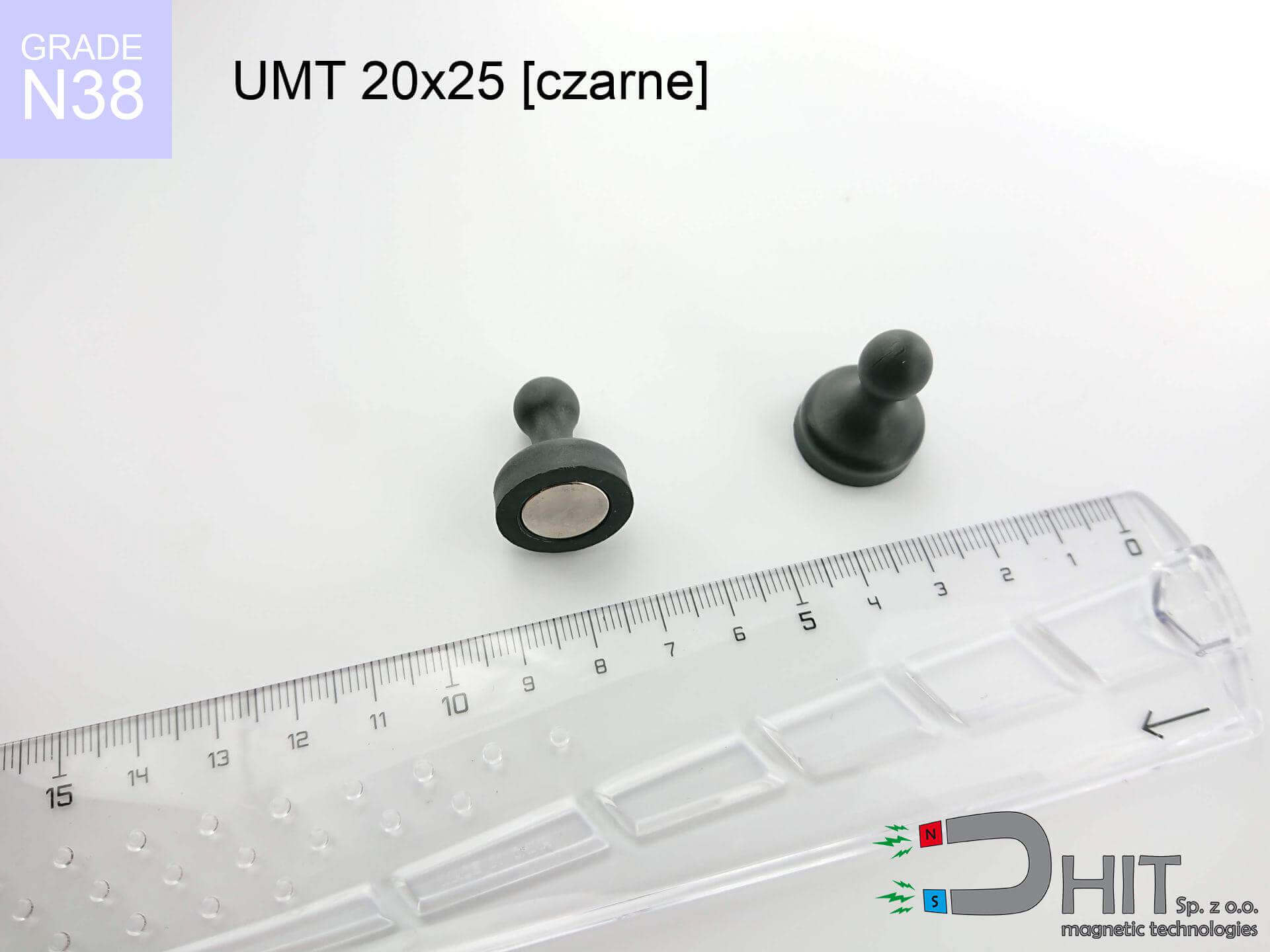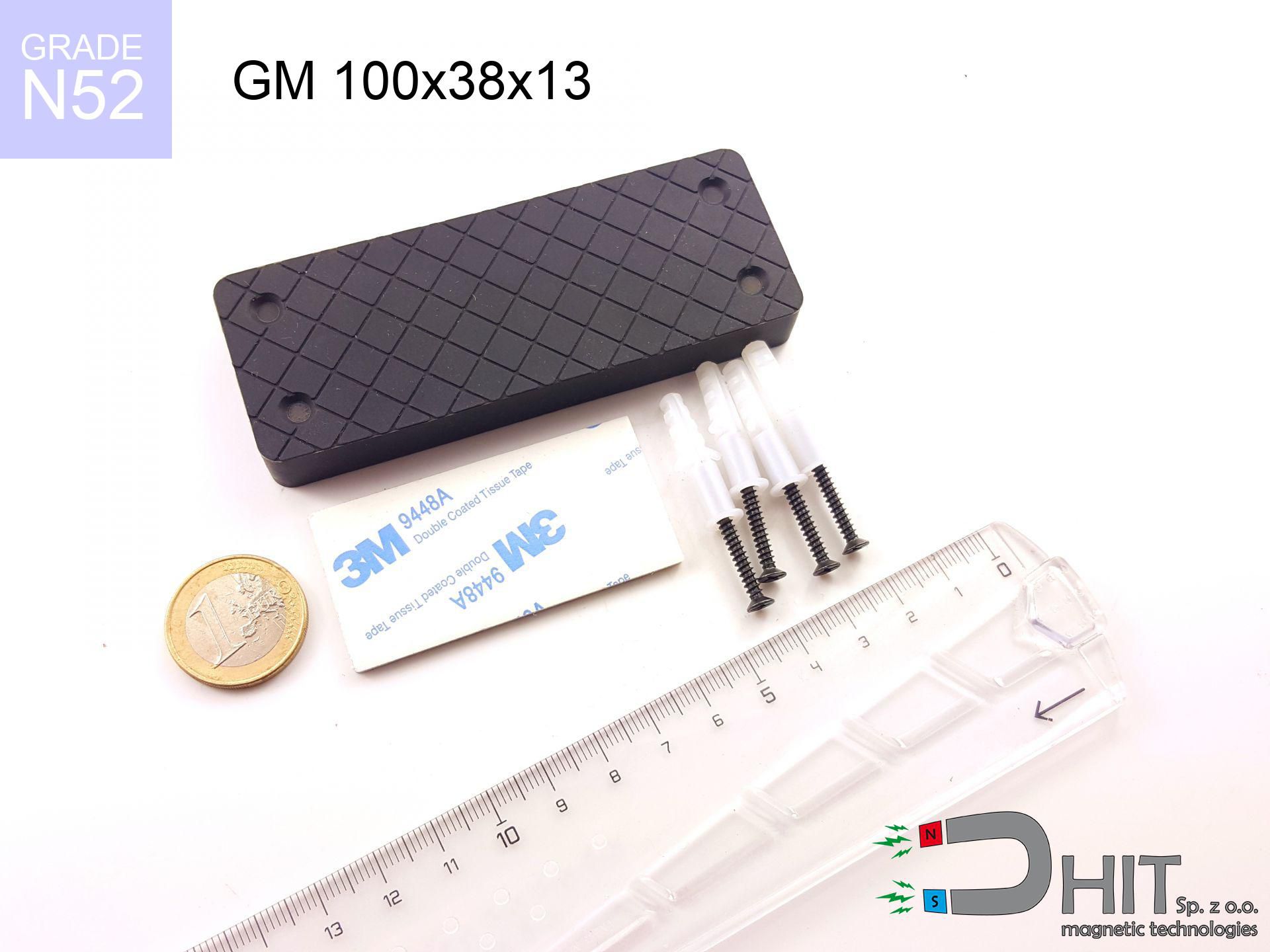UMT 20x25 black / N38 - board holder
board holder
Catalog no 230263
GTIN: 5906301814269
Diameter Ø [±0,1 mm]
20 mm
Height [±0,1 mm]
25 mm
Weight
7 g
Coating
[NiCuNi] nickel
3.49 ZŁ with VAT / pcs + price for transport
2.84 ZŁ net + 23% VAT / pcs
bulk discounts:
Need more?Not sure where to buy?
Call us
+48 22 499 98 98
if you prefer contact us using
contact form
the contact form page.
Lifting power and form of neodymium magnets can be calculated using our
online calculation tool.
Same-day processing for orders placed before 14:00.
Magnetic properties of material N38
Physical properties of sintered neodymium magnets Nd2Fe14B at 20°C
Shopping tips
Pros and cons of NdFeB magnets.
Apart from their superior power, neodymium magnets have these key benefits:
- They virtually do not lose power, because even after ten years the performance loss is only ~1% (based on calculations),
- Neodymium magnets remain extremely resistant to loss of magnetic properties caused by external interference,
- By using a shiny coating of silver, the element acquires an modern look,
- They are known for high magnetic induction at the operating surface, which improves attraction properties,
- Made from properly selected components, these magnets show impressive resistance to high heat, enabling them to function (depending on their form) at temperatures up to 230°C and above...
- Possibility of individual machining as well as modifying to precise conditions,
- Versatile presence in modern technologies – they find application in HDD drives, brushless drives, advanced medical instruments, and industrial machines.
- Relatively small size with high pulling force – neodymium magnets offer strong magnetic field in tiny dimensions, which enables their usage in small systems
Disadvantages of neodymium magnets:
- They are prone to damage upon heavy impacts. To avoid cracks, it is worth securing magnets using a steel holder. Such protection not only shields the magnet but also increases its resistance to damage
- We warn that neodymium magnets can reduce their power at high temperatures. To prevent this, we recommend our specialized [AH] magnets, which work effectively even at 230°C.
- When exposed to humidity, magnets start to rust. For applications outside, it is recommended to use protective magnets, such as magnets in rubber or plastics, which secure oxidation and corrosion.
- We suggest a housing - magnetic mechanism, due to difficulties in realizing threads inside the magnet and complicated forms.
- Possible danger related to microscopic parts of magnets can be dangerous, when accidentally swallowed, which becomes key in the aspect of protecting the youngest. Additionally, small components of these devices are able to be problematic in diagnostics medical in case of swallowing.
- High unit price – neodymium magnets have a higher price than other types of magnets (e.g. ferrite), which can limit application in large quantities
Maximum holding power of the magnet – what affects it?
The load parameter shown represents the limit force, obtained under ideal test conditions, specifically:
- with the application of a yoke made of special test steel, ensuring full magnetic saturation
- whose thickness equals approx. 10 mm
- characterized by lack of roughness
- with total lack of distance (without impurities)
- under vertical force direction (90-degree angle)
- at temperature room level
Key elements affecting lifting force
It is worth knowing that the application force will differ influenced by elements below, in order of importance:
- Air gap (betwixt the magnet and the plate), as even a tiny distance (e.g. 0.5 mm) results in a drastic drop in force by up to 50% (this also applies to paint, corrosion or dirt).
- Direction of force – highest force is available only during pulling at a 90° angle. The force required to slide of the magnet along the plate is standardly many times smaller (approx. 1/5 of the lifting capacity).
- Element thickness – for full efficiency, the steel must be sufficiently thick. Thin sheet limits the lifting capacity (the magnet "punches through" it).
- Chemical composition of the base – mild steel attracts best. Alloy admixtures lower magnetic permeability and lifting capacity.
- Surface quality – the smoother and more polished the surface, the better the adhesion and higher the lifting capacity. Roughness creates an air distance.
- Thermal environment – temperature increase causes a temporary drop of force. It is worth remembering the thermal limit for a given model.
* Lifting capacity testing was performed on plates with a smooth surface of optimal thickness, under perpendicular forces, in contrast under shearing force the load capacity is reduced by as much as fivefold. Additionally, even a small distance {between} the magnet’s surface and the plate decreases the lifting capacity.
Safe handling of neodymium magnets
Adults only
NdFeB magnets are not intended for children. Eating several magnets may result in them attracting across intestines, which poses a direct threat to life and necessitates urgent medical intervention.
Shattering risk
Protect your eyes. Magnets can explode upon violent connection, launching sharp fragments into the air. Eye protection is mandatory.
Bodily injuries
Watch your fingers. Two large magnets will snap together instantly with a force of several hundred kilograms, destroying anything in their path. Be careful!
Health Danger
For implant holders: Strong magnetic fields affect electronics. Maintain at least 30 cm distance or ask another person to work with the magnets.
Protect data
Do not bring magnets near a wallet, laptop, or TV. The magnetic field can destroy these devices and wipe information from cards.
Do not underestimate power
Exercise caution. Neodymium magnets act from a distance and snap with massive power, often faster than you can move away.
Power loss in heat
Standard neodymium magnets (grade N) undergo demagnetization when the temperature surpasses 80°C. Damage is permanent.
Keep away from electronics
Be aware: rare earth magnets generate a field that disrupts precision electronics. Keep a safe distance from your mobile, tablet, and navigation systems.
Sensitization to coating
Some people experience a sensitization to nickel, which is the standard coating for NdFeB magnets. Prolonged contact may cause an allergic reaction. We suggest use protective gloves.
Do not drill into magnets
Fire hazard: Rare earth powder is highly flammable. Do not process magnets in home conditions as this may cause fire.
Important!
Want to know more? Read our article: Why are neodymium magnets dangerous?




![AM ucho małe [M8] - magnetic accessories AM ucho małe [M8] - magnetic accessories](https://cdn3.dhit.pl/graphics/products/am-ucho-małe-m8-zud.jpg)
![AM ucho [M8] - magnetic accessories AM ucho [M8] - magnetic accessories](https://cdn3.dhit.pl/graphics/products/am-ucho-m8-lib.jpg)


